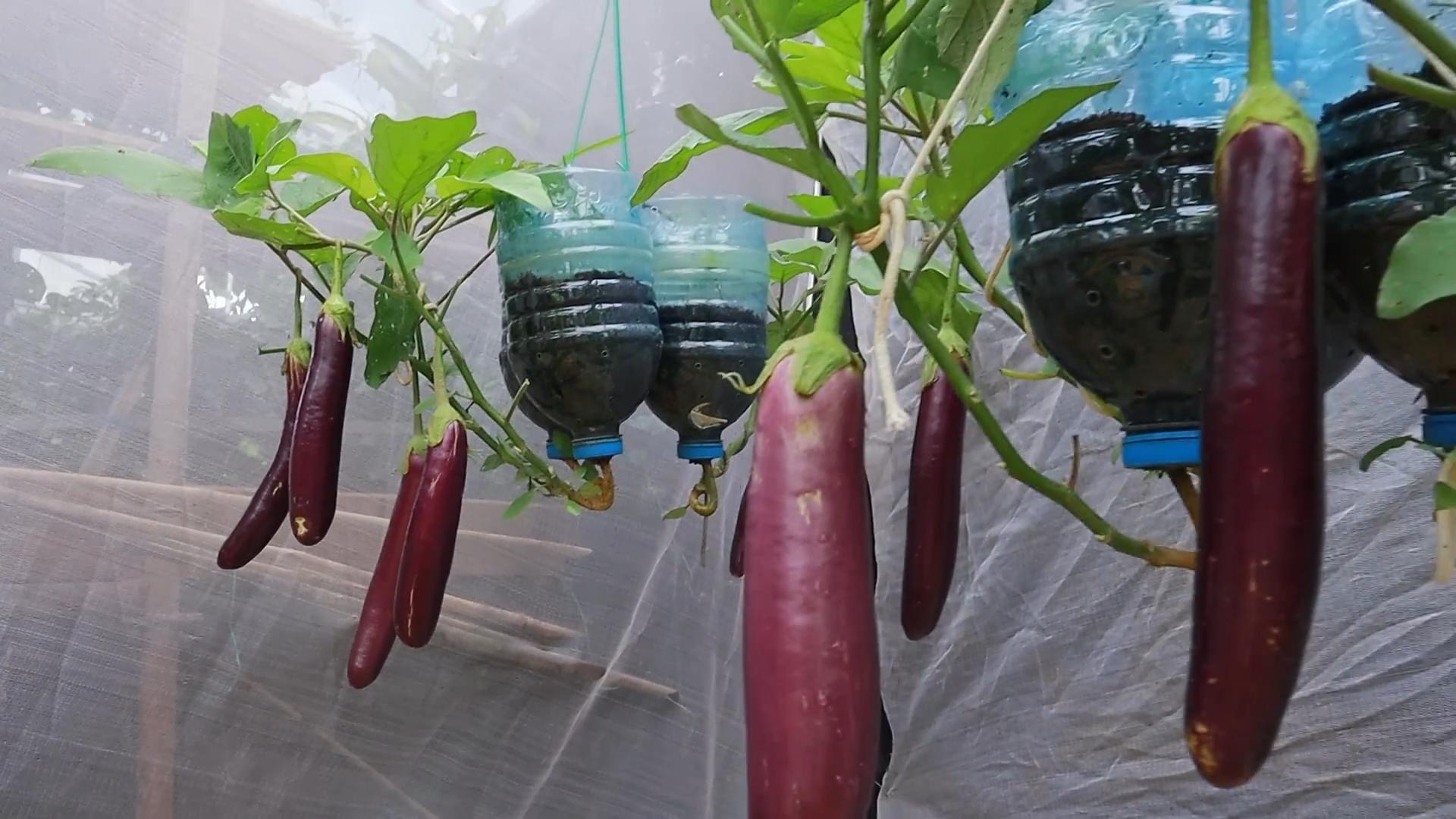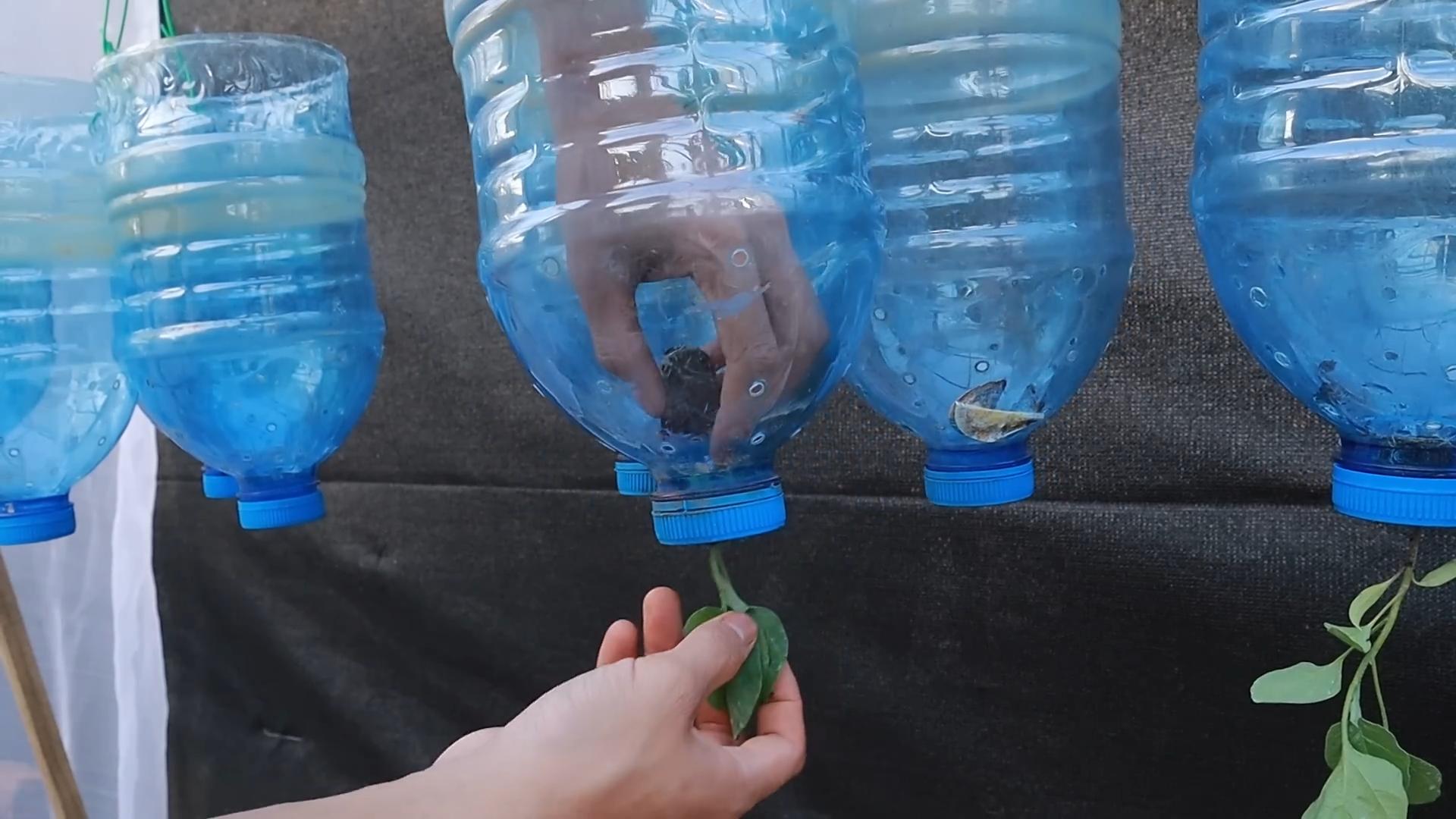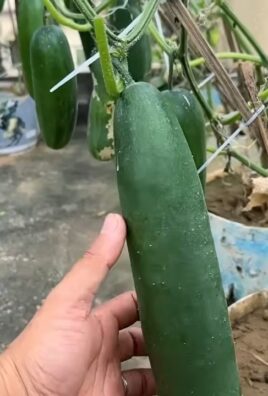Turnip Harvest at Home – sounds like a dream, doesn’t it? Imagine stepping out your back door and plucking fresh, crisp turnips straight from your own garden! Forget those bland, store-bought veggies; we’re talking about homegrown goodness bursting with flavor. But let’s be honest, sometimes the reality of home gardening can feel a little less idyllic and a little more…challenging. That’s where these DIY tricks and hacks come in!
For centuries, turnips have been a staple crop in cultures around the world, from ancient Rome to medieval Europe. They were a reliable source of nourishment, especially during the colder months. Today, while we might not rely on them for survival, the satisfaction of growing your own food, particularly a root vegetable like a turnip, is incredibly rewarding.
But why bother with the effort? Well, for starters, homegrown turnips taste infinitely better! Plus, you know exactly what’s gone into growing them – no mystery pesticides or questionable practices. And let’s not forget the sheer joy of nurturing something from seed to table. However, many gardeners struggle with common issues like pest control, soil preparation, and knowing exactly when to harvest for peak flavor. That’s why I’ve compiled this collection of simple, effective DIY tricks to help you achieve a bountiful turnip harvest at home. These aren’t complicated, time-consuming projects; they’re clever solutions designed to make your gardening experience easier and more enjoyable. So, grab your gardening gloves, and let’s get started!

Growing and Harvesting Turnips in Your Own Backyard: A DIY Guide
Hey there, fellow garden enthusiasts! I’m so excited to share my experience with growing and harvesting turnips right in my own backyard. It’s surprisingly easy and rewarding, and nothing beats the taste of freshly harvested, homegrown turnips. This guide will walk you through every step, from planting to pulling those delicious roots from the ground. Let’s get started!
Choosing the Right Turnip Variety
Before we even think about digging in the dirt, let’s talk about turnip varieties. There are tons of options, each with its own unique flavor and growing characteristics. Here are a few of my favorites:
* Purple Top White Globe: This is a classic, reliable variety that produces large, round roots with a mild flavor. It’s great for both the roots and the greens.
* Tokyo Cross: If you’re looking for something quick, Tokyo Cross is your best bet. It matures super fast and has a sweet, delicate flavor.
* Golden Ball: As the name suggests, this variety produces beautiful golden-yellow roots. They’re known for their sweet and tender flesh.
* Hakurei: This Japanese turnip is incredibly versatile. You can eat it raw in salads, roast it, or even pickle it. The greens are also delicious.
Consider your climate and personal preferences when choosing a variety. Some turnips are better suited for warmer climates, while others thrive in cooler weather.
Preparing Your Garden Bed
Turnips are pretty forgiving, but they’ll grow best in well-drained soil that’s rich in organic matter. Here’s how I prepare my garden bed:
* Choose a sunny spot: Turnips need at least 6 hours of sunlight per day.
* Clear the area: Remove any weeds, rocks, or debris from the planting area.
* Loosen the soil: Use a garden fork or tiller to loosen the soil to a depth of at least 12 inches. This will help the turnip roots grow easily.
* Amend the soil: Mix in plenty of compost or well-rotted manure to improve drainage and fertility. Turnips love a soil pH between 6.0 and 6.8. You can test your soil with a kit from your local garden center.
* Create raised beds (optional): Raised beds can improve drainage and warm up the soil faster in the spring.
Planting Turnip Seeds
Now for the fun part – planting! Turnips are a cool-season crop, so the best time to plant them is in early spring or late summer.
1. Check the last frost date: Plant your turnip seeds about 2-4 weeks before the last expected frost in spring, or 6-8 weeks before the first expected frost in fall.
2. Sow the seeds: Sow the seeds about ½ inch deep and 1 inch apart in rows that are 12-18 inches apart. I like to use a seed drill to make sure the seeds are evenly spaced.
3. Cover the seeds: Gently cover the seeds with soil and water thoroughly.
4. Thin the seedlings: Once the seedlings emerge and have a few true leaves, thin them to about 3-6 inches apart. This will give the turnips enough room to grow. Don’t throw away the thinnings! You can eat them as microgreens.
Caring for Your Turnip Plants
Turnips are relatively low-maintenance, but they do need a little bit of TLC to thrive.
* Water regularly: Keep the soil consistently moist, especially during dry spells. Turnips need about 1 inch of water per week.
* Weed diligently: Weeds can compete with turnips for nutrients and water, so it’s important to keep them under control. Hand-pull weeds carefully to avoid disturbing the turnip roots.
* Fertilize (optional): If your soil is poor, you can fertilize your turnips with a balanced fertilizer. Follow the instructions on the fertilizer package. I usually side-dress my turnips with compost tea every few weeks.
* Protect from pests: Turnips can be susceptible to pests like flea beetles and aphids. Cover your plants with row covers to protect them from pests. You can also use insecticidal soap or neem oil to control infestations.
Harvesting Turnip Greens
You can start harvesting turnip greens as soon as they’re large enough to eat, usually about 3-4 weeks after planting.
1. Choose the outer leaves: Harvest the outer leaves of the plant, leaving the inner leaves to continue growing.
2. Cut or snap the leaves: You can either cut the leaves with a knife or snap them off with your fingers.
3. Wash and cook: Wash the greens thoroughly and cook them like you would spinach or kale. They’re delicious sautéed, steamed, or added to soups and stews.
Harvesting Turnip Roots
The best part! Turnip roots are typically ready to harvest about 50-60 days after planting, depending on the variety.
1. Check the size: The size of the turnip root will vary depending on the variety, but generally, you want to harvest them when they’re about 2-3 inches in diameter.
2. Loosen the soil: Use a garden fork to loosen the soil around the turnip.
3. Pull the turnip: Gently pull the turnip from the ground, holding it by the base of the leaves.
4. Clean and store: Brush off any excess soil and trim the leaves, leaving about 1 inch of stem. Store the turnips in the refrigerator for up to several weeks.
Troubleshooting Common Turnip Problems
Even with the best care, you might encounter a few problems when growing turnips. Here are some common issues and how to deal with them:
* Bolting: Bolting is when the turnip plant prematurely flowers and goes to seed. This can happen if the weather is too hot or if the plants are stressed. To prevent bolting, plant your turnips at the right time of year and keep them well-watered.
* Root maggots: Root maggots are small, white larvae that feed on the roots of turnips. They can cause the roots to become deformed and inedible. To prevent root maggots, cover your plants with row covers and practice crop rotation.
* Clubroot: Clubroot is a fungal disease that causes the roots of turnips to become swollen and distorted. To prevent clubroot, improve soil drainage and avoid planting turnips in the same spot year after year.
* Flea beetles: Flea beetles are tiny, jumping insects that feed on the leaves of turnips. They can cause small holes in the leaves and stunt the growth of the plants. To control flea beetles, cover your plants with row covers and use insecticidal soap or neem oil.
Delicious Ways to Enjoy Your Homegrown Turnips
Now that you’ve harvested your turnips, it’s time to enjoy them! Here are a few of my favorite ways to prepare them:
* Roasted turnips: Toss turnip cubes with olive oil, salt, pepper, and your favorite herbs, and roast them in the oven until they’re tender and slightly caramelized.
* Mashed turnips: Boil or steam turnip cubes until they’re tender, then mash them with butter, milk, and salt.
* Turnip soup: Add turnip cubes to your favorite soup recipe for a hearty and flavorful meal.
* Turnip greens: Sauté turnip greens with garlic and olive oil for a simple and delicious side dish.
* Raw turnips: Thinly slice or grate raw turnips and add them to salads or slaws. They have a slightly peppery flavor that adds a nice kick.
* Pickled turnips: Preserve your turnip harvest by pickling them. They make a great addition to sandwiches and salads.
Saving Turnip Seeds (Advanced)
If you want to get really ambitious, you can even save your own turnip seeds for next year. This is a bit more involved, but it’s a great way to become more self-sufficient in your gardening.
1. Choose healthy plants: Select the healthiest and most vigorous turnip plants to save seeds from.
2. Allow the plants to bolt: Let the plants flower and go to seed. This will take several months.
3. Harvest the seed pods: Once the seed pods are dry and brown, harvest them from the plant.
4. Extract the seeds: Crush the seed pods to release the seeds.
5. Clean and dry the seeds: Remove any debris from the seeds and dry them thoroughly.
6. Store the seeds: Store the seeds in an airtight container in a cool, dry place.
Conclusion
Growing and harvesting turnips at home is a rewarding experience that anyone can enjoy. With a little bit of planning and effort, you can have a bountiful harvest of delicious and nutritious turnips. So, get out there and start

Conclusion
So, there you have it! Harvesting your own turnips at home isn’t just a gardening chore; it’s a gateway to fresher, more flavorful meals and a deeper connection with the food you eat. We’ve walked through the simple steps, from recognizing the signs of ripeness to gently coaxing those earthy treasures from the soil. But why is this DIY trick a must-try?
Firstly, the taste difference is undeniable. Store-bought turnips, while convenient, often lack the vibrant, slightly peppery kick of freshly harvested ones. When you harvest your own, you’re getting peak flavor and nutrients, untainted by long storage or transportation. Imagine the difference in your roasted root vegetables, your creamy turnip soup, or even your turnip greens sauteed with garlic and olive oil. The flavor will be noticeably brighter and more intense.
Secondly, it’s incredibly rewarding. There’s a unique satisfaction in nurturing a plant from seed to harvest, knowing you’ve played a direct role in putting healthy food on your table. It’s a tangible connection to nature that can be incredibly grounding and fulfilling.
Thirdly, it’s economical. While the initial investment in seeds and perhaps some soil amendments might seem like a cost, consider the long-term savings of growing your own produce. Plus, you can save the seeds from your best turnips for future plantings, creating a sustainable cycle of homegrown goodness.
But the benefits don’t stop there. Harvesting your own turnips allows for greater control over the size and maturity of your harvest. Prefer smaller, sweeter turnips for salads? Harvest them earlier. Want larger, more robust turnips for roasting? Let them mature a bit longer. The choice is yours!
Variations and Suggestions:
* Turnip Greens Galore: Don’t discard those beautiful turnip greens! They are packed with vitamins and minerals and can be cooked like spinach or kale. Try sauteing them with garlic, olive oil, and a pinch of red pepper flakes for a simple and delicious side dish. You can also add them to soups, stews, or even smoothies for an extra nutritional boost.
* Pickled Turnips: For a tangy and flavorful treat, consider pickling some of your turnip harvest. There are countless recipes online, ranging from simple vinegar-based pickles to more complex fermented versions. Pickled turnips are a great addition to sandwiches, salads, or charcuterie boards.
* Roasted Turnip Medley: Combine your harvested turnips with other root vegetables like carrots, parsnips, and potatoes for a colorful and flavorful roasted medley. Toss them with olive oil, herbs, and spices, and roast until tender and slightly caramelized.
* Turnip and Apple Salad: For a refreshing and unexpected salad, try combining thinly sliced raw turnips with crisp apples, toasted walnuts, and a light vinaigrette. The sweetness of the apples complements the slight bitterness of the turnips perfectly.
* Experiment with Varieties: There are many different varieties of turnips to choose from, each with its own unique flavor and texture. Experiment with different varieties to find your favorites. Some popular choices include Purple Top White Globe, Tokyo Cross, and Golden Ball.
We wholeheartedly encourage you to give this DIY trick a try. It’s easier than you might think, and the rewards are well worth the effort. Once you’ve experienced the joy of harvesting your own turnips, you’ll never look at store-bought ones the same way again.
So, grab your gardening gloves, head out to your garden (or even a container on your balcony!), and start growing. And most importantly, don’t forget to share your experiences with us! We’d love to hear about your successes, your challenges, and your favorite ways to enjoy your homegrown turnips. Share your photos and stories on social media using #HomegrownTurnips or leave a comment below. Let’s build a community of turnip-loving gardeners! Embrace the process of **turnip harvest** and enjoy the fruits (or rather, roots) of your labor!
Frequently Asked Questions (FAQ)
How do I know when my turnips are ready to harvest?
The size of the turnip is the best indicator of ripeness. Most varieties are ready to harvest when the roots are 2-3 inches in diameter. You can also check the top of the turnip near the soil line; if it’s starting to peek out and looks smooth and firm, it’s likely ready. Don’t wait too long, as overly mature turnips can become woody and bitter.
Can I harvest the turnip greens?
Absolutely! Turnip greens are a delicious and nutritious bonus. You can harvest them at any time during the growing season. Simply cut off the outer leaves, leaving the inner leaves to continue growing. Be sure to wash the greens thoroughly before cooking.
What if my turnips are small and stunted?
Several factors can contribute to small or stunted turnips, including poor soil, insufficient sunlight, and overcrowding. Ensure your turnips are planted in well-drained soil that is rich in organic matter. They need at least 6 hours of sunlight per day. Thin out your seedlings to give them enough space to grow. Also, make sure they are getting enough water, especially during dry periods.
How do I store my harvested turnips?
To store turnips, cut off the greens, leaving about an inch of stem. Gently brush off any excess soil, but don’t wash them until you’re ready to use them. Store the turnips in a cool, dark, and humid place, such as a root cellar or the crisper drawer of your refrigerator. They should last for several weeks. Store the greens separately in a plastic bag in the refrigerator, and use them within a few days.
What kind of soil is best for growing turnips?
Turnips prefer well-drained, fertile soil with a pH between 6.0 and 6.8. Amend your soil with compost or other organic matter before planting to improve drainage and fertility. Avoid heavy clay soils, as they can become waterlogged and prevent the turnips from developing properly.
Can I grow turnips in containers?
Yes, you can! Choose a container that is at least 12 inches deep and wide. Fill it with a good quality potting mix. Be sure to provide adequate drainage. Container-grown turnips may require more frequent watering and fertilization than those grown in the ground.
Are there any pests or diseases that affect turnips?
Yes, turnips can be susceptible to certain pests and diseases, including aphids, flea beetles, and clubroot. Monitor your plants regularly for signs of infestation or disease. Use organic pest control methods, such as insecticidal soap or neem oil, to control pests. Prevent clubroot by practicing crop rotation and ensuring your soil is well-drained.
How often should I water my turnips?
Turnips need consistent moisture to thrive. Water them deeply whenever the top inch of soil feels dry to the touch. Avoid overwatering, as this can lead to root rot. Mulching around the plants can help to retain moisture and suppress weeds.
Can I eat turnip roots and greens raw?
Yes, both turnip roots and greens can be eaten raw. Young, small turnips are often sweeter and more tender, making them ideal for salads or snacking. Turnip greens can be added to salads or used as a garnish. However, some people find the flavor of raw turnips and greens to be too strong, so it’s best to start with small amounts.
What are some other ways to use turnips in cooking?
Besides roasting, boiling, and pickling, turnips can be used in a variety of other dishes. They can be mashed like potatoes, added to soups and stews, or grated and used in fritters or pancakes. They can also be fermented to make sauerkraut or kimchi. Get creative and experiment with different ways to incorporate turnips into your meals!




Leave a Comment